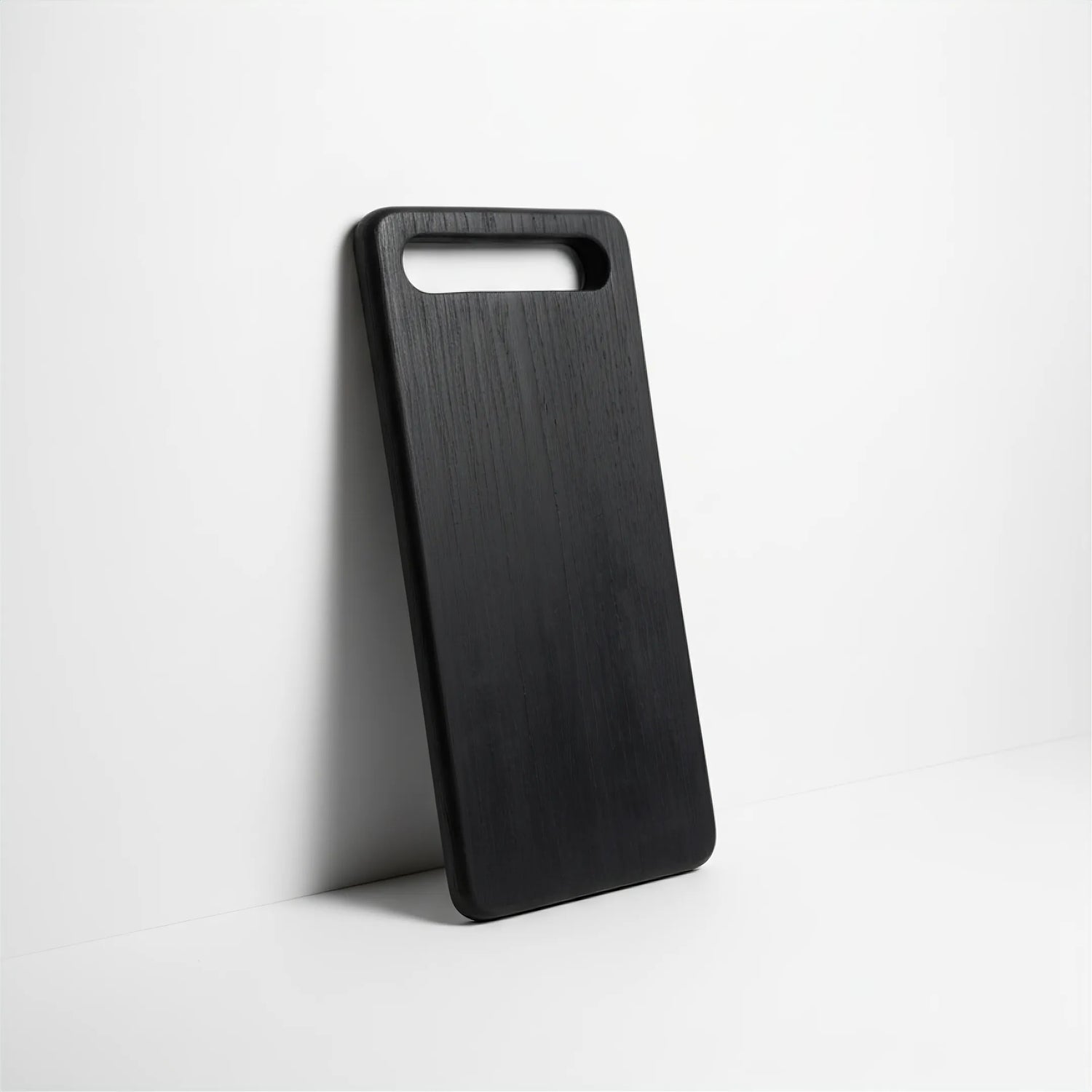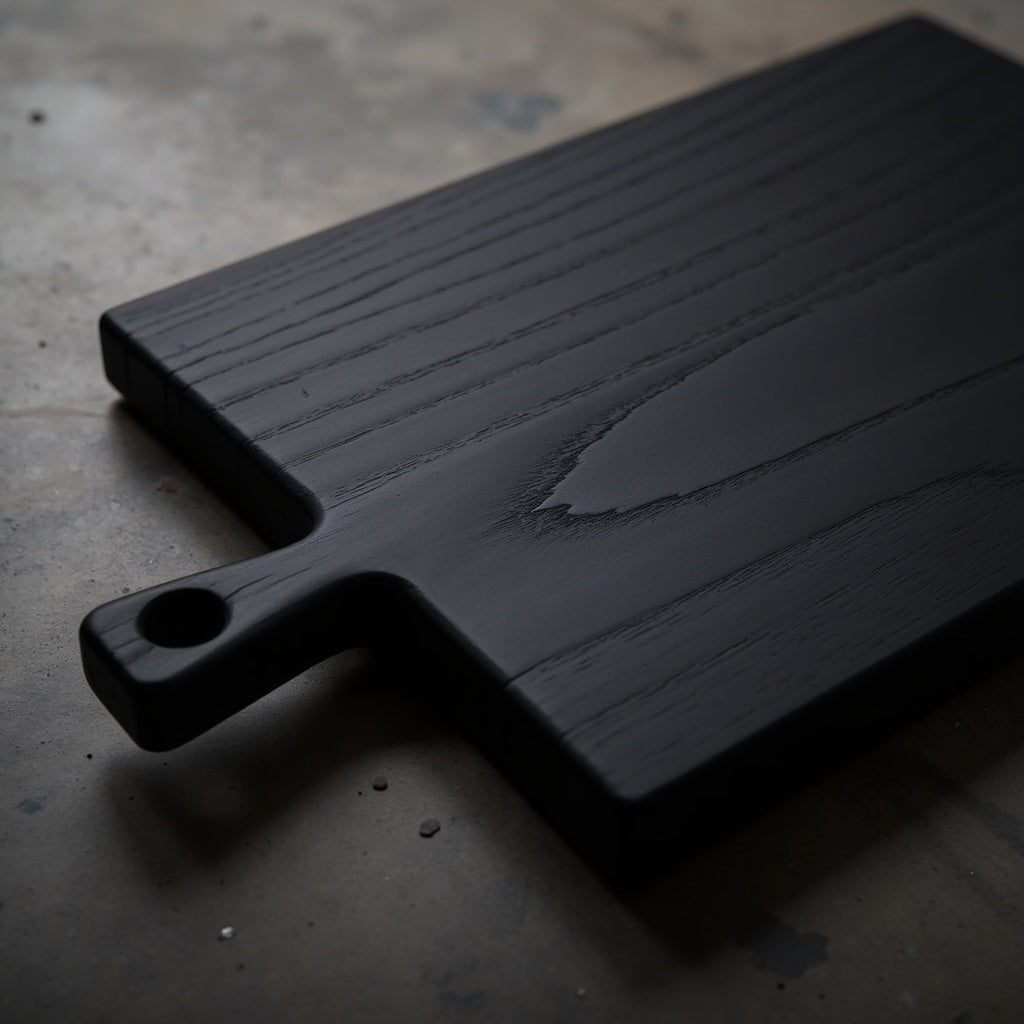Why Choose Shou Sugi Ban Over Other Cutting Boards
Understanding how Shou Sugi Ban compares to other wood finishing methods, plastic and stainless steel cutting boards to help appreciate its unique advantages for cutting boards.

Shou Sugi Ban
vs Plastic Cutting Boards
Practical Differences:
- Liquid Behavior: Both resist absorption, but only Shou Sugi Ban creates natural beading
- Wear Pattern: Plastic develops permanent grooves; Shou Sugi Ban's texture masks cuts
- Microplastics: Every knife cut on a plastic cutting board releases microplastics. Enough said.
- Kitchen Aesthetics: Purely functional vs functional art

Shou Sugi Ban
vs Traditional Wood Cutting Boards
Surface Performance:
- Water Management: Traditional boards absorb liquids; Shou Sugi Ban surfaces cause liquids to bead for superior bacteria prevention and easy cleanup
- Knife Mark Visibility: Smooth wood shows every cut clearly; pronounced grain naturally camouflages marks
- Maintenance Indicator: Traditional boards give few signals; water beading on Shou Sugi Ban shows when re-oiling is needed

Shou Sugi Ban
vs Bamboo/Composite Boards
Material Integrity:
- Construction: Solid wood with enhanced grain vs glued strips that can separate
- Water Resistance: Natural carbon repellency vs porous surface
- Character Development: Becomes more unique with use vs shows wear uniformly
- Authenticity: Traditional craft technique vs modern manufacturing
- Quality: Our Shou Sugi Ban boards last years with daily use vs boards that require annual replacement

Shou Sugi Ban
vs Stainless Steel
User Experience:
- Knife Care: Gentle on edges vs rapidly dulls knives
- Sensory Experience: Warm, organic feel and sound vs cold, clinical clanging
- Versatility: Beautiful serving surface vs purely functional
- Character: Unique imperfections vs industrial uniformity

